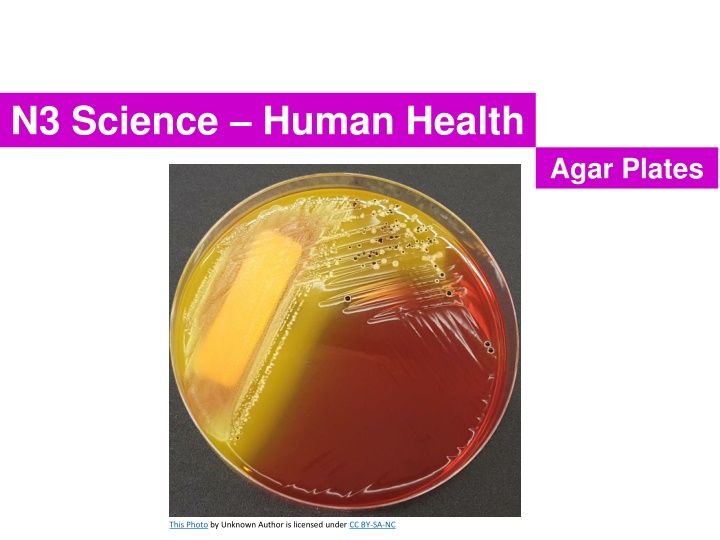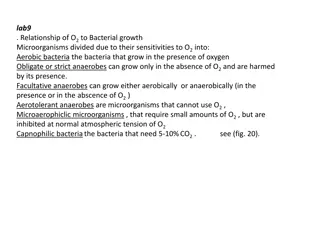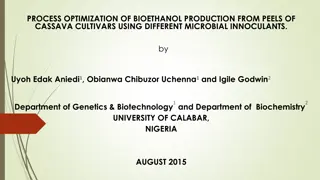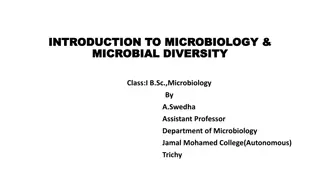
Bacterial Growth and Agar Plates in Human Health Science
Explore the fascinating world of bacterial growth and agar plates in human health science. Learn about binary fission, nutrient requirements for bacteria, and how to prepare agar plates for laboratory experiments. Discover the principles of microbiological growth and witness the multiplication of bacterial cells before and after handwashing.
Download Presentation

Please find below an Image/Link to download the presentation.
The content on the website is provided AS IS for your information and personal use only. It may not be sold, licensed, or shared on other websites without obtaining consent from the author. If you encounter any issues during the download, it is possible that the publisher has removed the file from their server.
You are allowed to download the files provided on this website for personal or commercial use, subject to the condition that they are used lawfully. All files are the property of their respective owners.
The content on the website is provided AS IS for your information and personal use only. It may not be sold, licensed, or shared on other websites without obtaining consent from the author.
E N D
Presentation Transcript
N3 Science Human Health Agar Plates This Photo by Unknown Author is licensed under CC BY-SA-NC
N3 Science Human Health Agar Plates Learning intention We are learning about the growth of bacterial cells Success Criteria I know the correct conditions for bacteria to grow. I know bacteria multiply by dividing into two new cells every 20 mins. I can compare microbiological growth before and after handwashing
N3 Science Human Health Agar Plates Water (moisture)
N3 Science Human Health Agar Plates Bacterial Growth Bacterial cell can grow and split into 2 cells approximately every 20 minutes. This process is called Binary Fission. The speed at which this process occurs depends on the availability of nutrients and other conditions being suitable. Bacteria are grown on agar plates the original microscopic cells divide repeatedly, piling up on top of one another. This produces visible colonies
N3 Science Human Health Agar Plates Bacterial Growth One Bacterial Cell 8 Bacterial Cells
N3 Science Human Health Agar Plates Bacterial Growth 1. Copy and Complete the following table Time (mins) 0 20 40 60 (1 hour) 80 100 120 Number of Bacterial Cells 1 2 4 2. Calculate how many bacterial cells there would be after a) 3 hours b) 4 hours
N3 Science Human Health Agar Plates Bacterial Growth ANSWERS 1. Copy and Complete the following table Time (mins) 0 20 40 60 (1 hour) 80 100 120 Number of Bacterial Cells 1 2 4 8 16 32 64 2. Calculate how many bacterial cells there would be after a) 3 hours 512 b) 4 hours 4096
N3 Science Human Health Agar Plates Agar Plates An agar plate is a Petri Dish that contains agar. The agar is poured into the petri dish as a hot liquid and it then solidifies as it cools forming a jelly like substance The agar has the required nutrients for Bacterial growth added to it.
N3 Science Human Health Agar Plates Preparing Agar Plates https://www.youtube.com/watch?v=wCK_cms7vIo
N3 Science Human Health Agar Plates Nutrient Agar is a general purpose agar, it is used to culture a wide variety of different types of bacteria and fungi, as it contains many different nutrients Blood Agar is used to culture types of Bacteria that are able to breakdown red blood cells. Chocolate Agar is used to culture certain pathogenic (disease causing) bacteria.
N3 Science Human Health Agar Plates Bacterial Colonies Growing on Agar Plates The nutrients added to the agar depends on what type of Bacteria is being cultured (they also give the agar it s colour).






















